ASM Metals HandBook Vol. 17 - Nondestructive Evaluation and Quality Control
Подождите немного. Документ загружается.

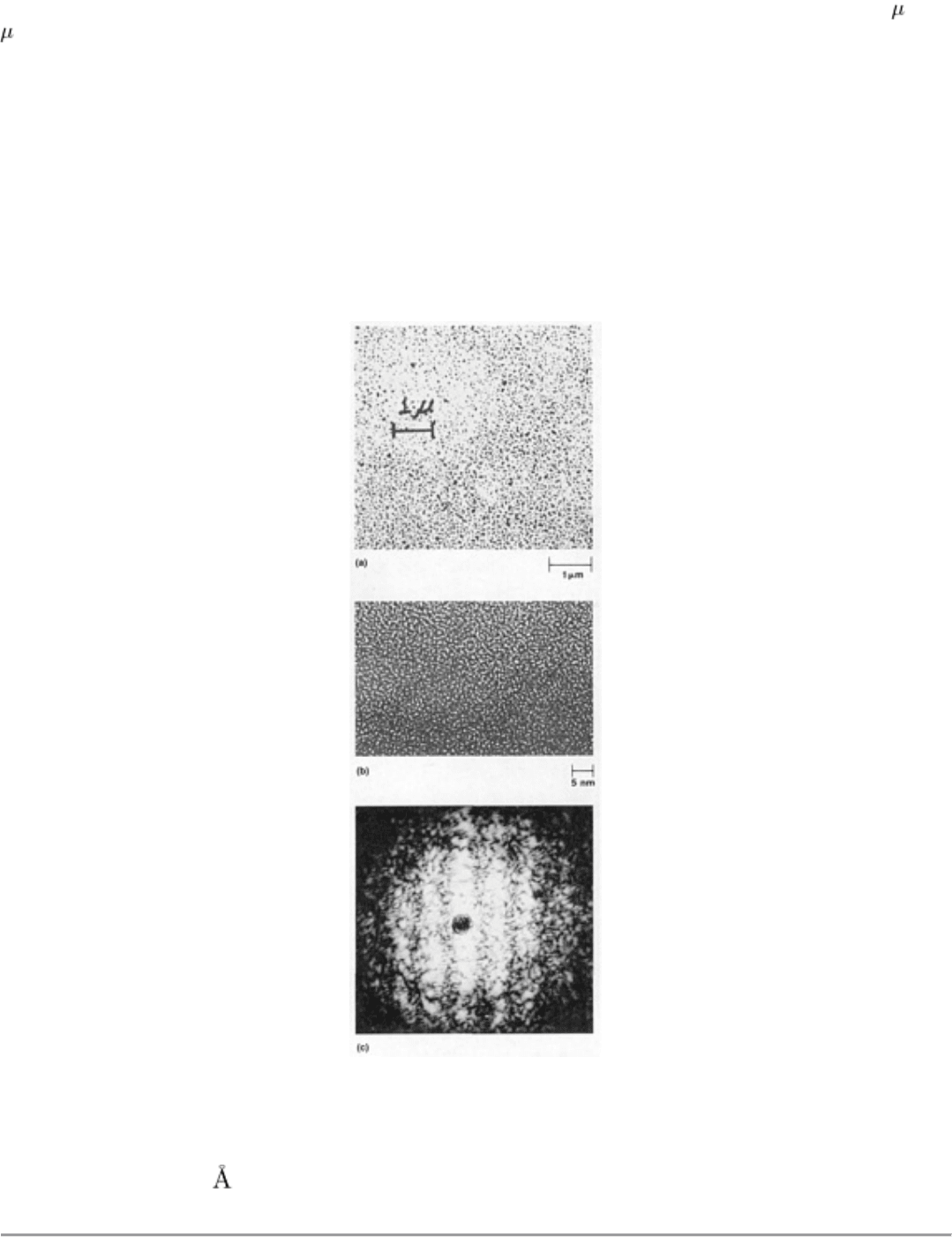
The sensitivity of any speckle method is controlled by the sizes of the smallest speckles. The laws of physics dictate that
one cannot observe, and therefore record, an object smaller than the wavelength of the radiation that is used to illuminate
the object. Therefore, using light in the visible spectrum implies that the smallest observable speckle is about 0.5 m (20
in.) in diameter. This is essentially the resolution limit (that is, the smallest measurable displacement) of the speckle
method. To increase the sensitivity of the technique, it is necessary to resort to radiation sources having shorter
wavelengths.
Electron Microscopy Speckle Method. One option is to use the electron microscope speckle method (Ref 7).
Through vacuum deposition or some other type of chemical processing, speckles only a small fraction of a micron in size
can be created. These speckles are observable only through an electron microscope. Figure 7 shows two such patterns as
observed by scanning electron microscopy and transmission electron microscopy. They were recorded on photographic
film and then processed using a laser beam. A typical Young's fringe pattern from a double-exposure electron microscopy
specklegram is also shown in Fig. 7. With this approach, the sensitivity of the speckle method can be increased by two
orders of magnitude.
Fig. 7 Electron microscopy speckle method for microdeformat
ion measurement. (a) Speckles formed by
vacuum depositing gold particles on graphite as recorded by scanning electron microscopy. (b) Extremely small
speckles revealed by transmission electron microscopy. (c) Young's fringes representing displacement of th
e
order of 0.001 nm (0.01 ).
References cited in this section
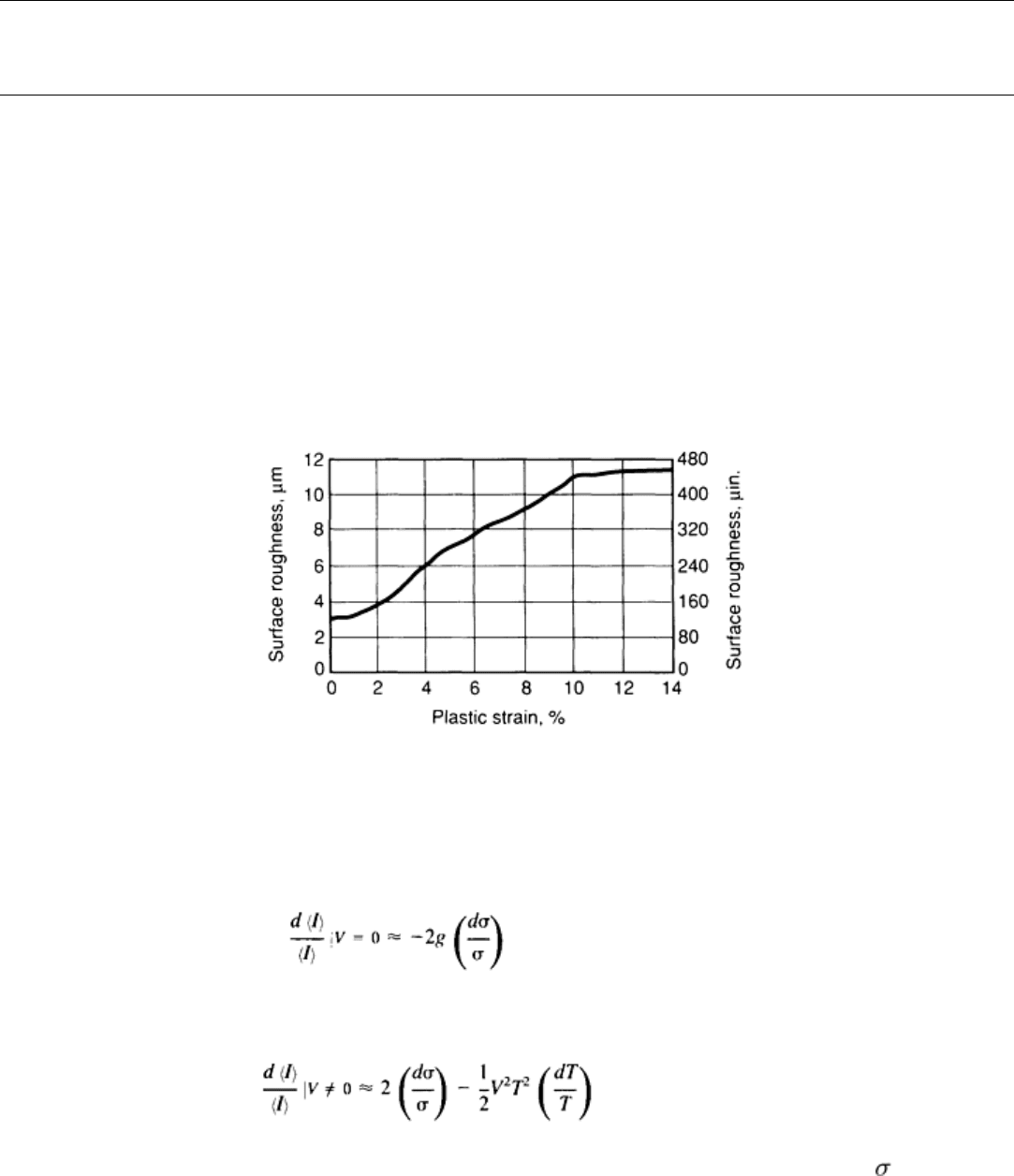
6.
A. Asundi and F.P. Chiang, Theory and Application of White Light Speckle Methods, Opt. Eng.,
Vol 21 (No.
4), 1982, p 570-580
7.
F.P. Chiang, Speckle Method With Electron Microscopes, in Proceedings of the Annual Spring Meeting,
Society for Experimental Mechanics, 1982, p 24-28
Speckle Metrology
F.P. Chiang, Laboratory for Experimental Mechanics Research, State University of New York at Stony Brook
Determination of Surface Roughness, Plastic Strain, and Fatigue
When a narrow laser beam impinges on a metal surface, the reflected speckle pattern carries the roughness information of
the surface as well. Because plastic strain increases the surface roughness (until the saturation stage is reached), the
pattern can also be used to monitor plastic strain. Furthermore, if this technique is used to monitor plastic strain at the tip
of a notch, for example, the process of metal fatigue resulting in crack initiation and crack propagation can be ascertained.
Figure 8 shows a typical relationship between surface roughness and plastic strain for an 1100-00 aluminum specimen. As
long as the total effective plastic strain is the same, the same surface roughness results irrespective of the path along
which the plastic strain is attained.
Fig. 8 Plot of surface roughness versus plastic strain for a polished 1100-00 aluminum specimen
The variation of light intensity of a laser beam reflected from a rough surface can be expressed:
(Eq 8)
along the direction of mirror reflection and:
(Eq 9)
along all other directions. In Eq 8 and 9, <I> is the average intensity, V is the direction of diffracted light, is the standard
deviation of the surface height function, T is the correlation length of the surface height function, and:
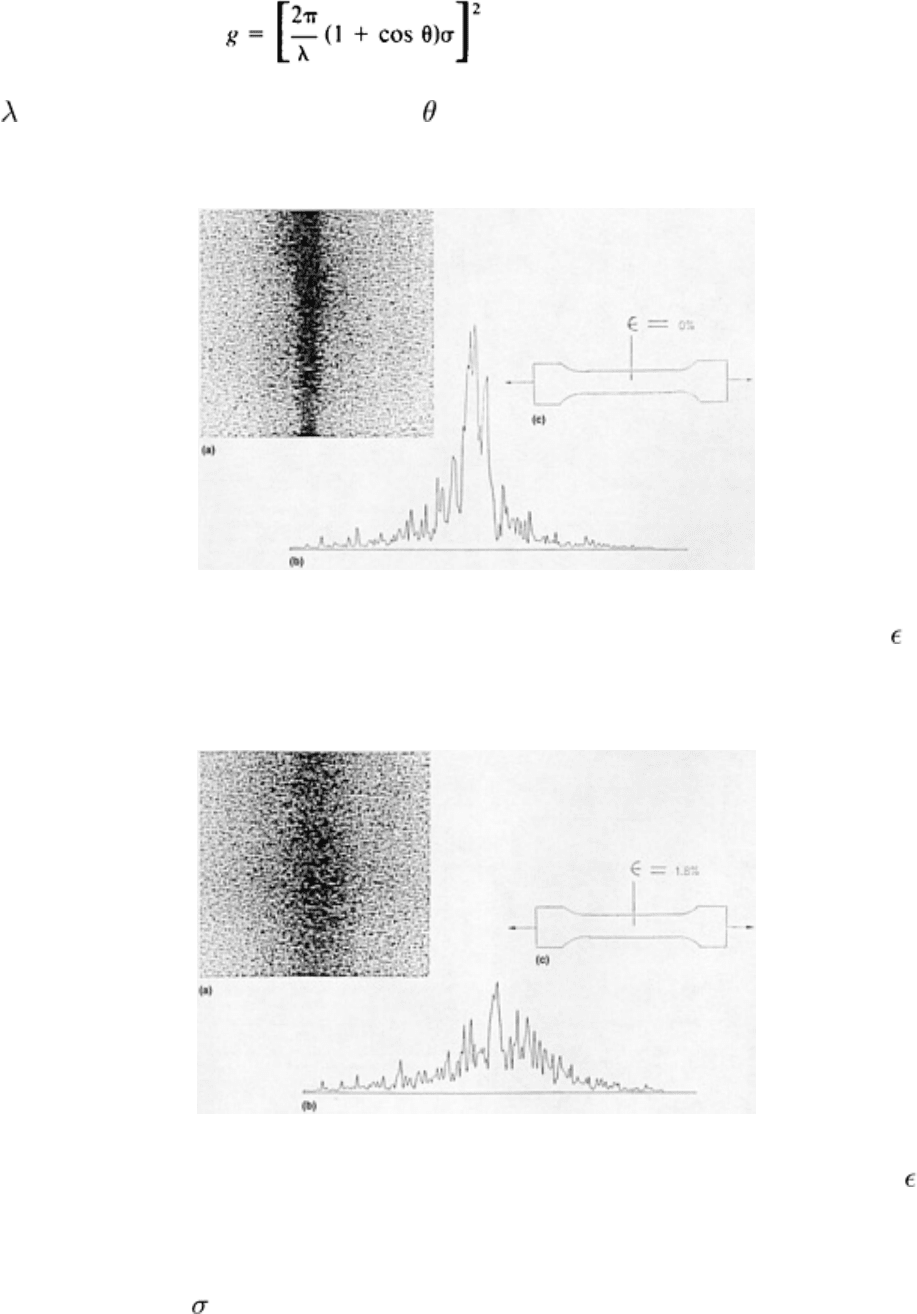
(Eq 10)
where is the wavelength of the incident light and is the incident angle. Typical diffraction patterns from a metal
surface at two levels of plastic strain are shown in Fig. 9 and 10.
Fig. 9 Speckle metrology data for an aluminum 1100 specimen in the original (as-received) state (
= 0%). (a)
Speckle spectrum.
(b) Intensity profile of speckle spectrum. (c) Schematic of sampling procedure for testing
plastic strain
Fig. 10 Speckle metrology data for an 1100 aluminum specimen subjected to 1.8% plastic strain (
= 1.8%).
(a) Speckle spectrum. (b) Intensity profile o
f speckle spectrum. (c) Schematic of sampling procedure for testing
plastic strain
Both the standard deviation, , and the correlation length, T, of the surface height function appear in Eq 9. Therefore, it is
more advantageous to use this part of the deflected light for the characterization of surface roughness. This fact is also
qualitatively evident from the two diffraction patterns shown in Fig. 9 and 10.
There are many ways to extract information from such a diffraction pattern. One approach is to window out a portion of
the higher spatial frequency domain of the diffraction spectrum, digitize it into gray levels (see the article "Machine
Vision and Robotic Evaluation" in this Volume), and then calculate the statistical contrast value of the pattern using:
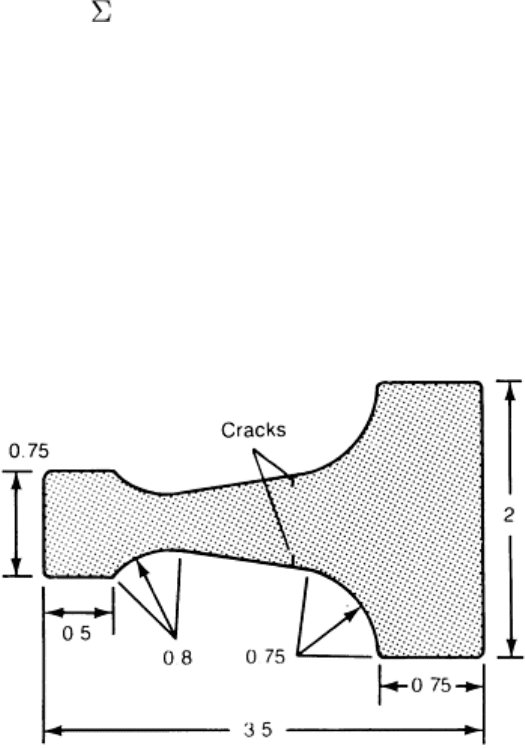
CON = (i - j)
2
P(i, j)
(Eq 11)
where P(i, j) is the probability density of a pair of gray levels occurring at two points separated by a certain distance.
The CON value is used to calibrate the measured strains of an aluminum specimen (1100-H14) in tension. The CON value
increases monotonically with respect to total strain until about 1.2% and plastic strain until about 0.9%. Beyond these
points, the CON values start to decrease with increased strain. However, in the discussion that follows, it is shown that the
CON value is nevertheless quite effective in predicting the onset of fatigue crack initiation and propagation.
The CON value method is applied to monitoring plastic strains at nine points surrounding the tip region of a saw-cut
notch in an aluminum specimen under cyclic bending stress. The geometry of the specimen and the configuration of the
points are shown in Fig. 11 and 12, respectively.
Fig. 11 Schematic showing cracks in a fatigue specimen made of 2.3 mm (0.09 in.) thick 1100-
00 aluminum.
Dimensions given in inches
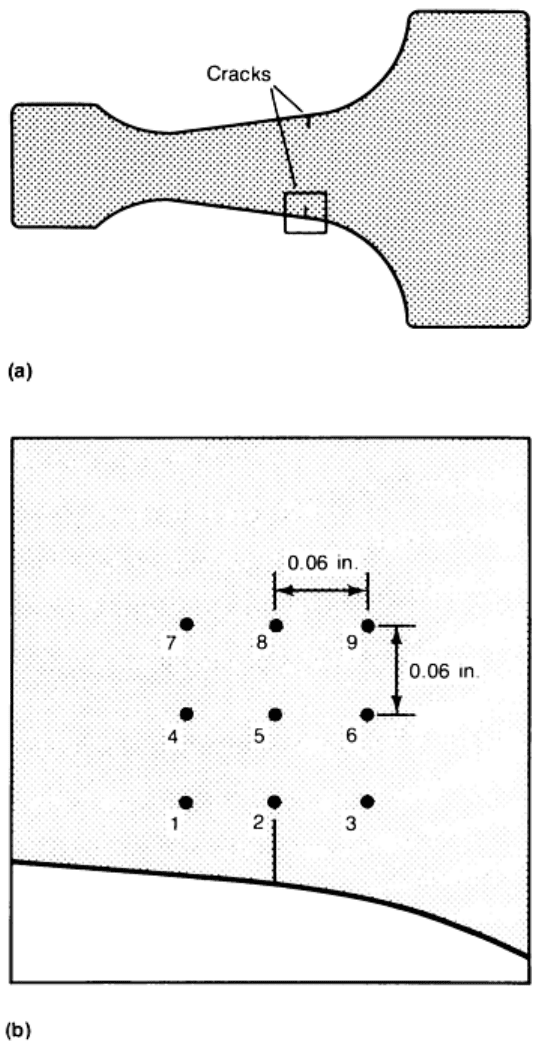
Fig. 12
Schematic of aluminum specimen showing cracks (a) and the nine test points arranged around the tip
of the bottom crack (b)
The specimen is mounted in a fatigue machine capable of rendering cyclic bending load. At predetermined cycles, the
machine is stopped, and a laser beam is used to illuminate the nine selected points sequentially. The resulting diffraction
spectra are received on a ground glass, and a window of their high-frequency region is digitized. A CON value is then
calculated for each of these digitized images. The results obtained are plotted in Fig. 13.
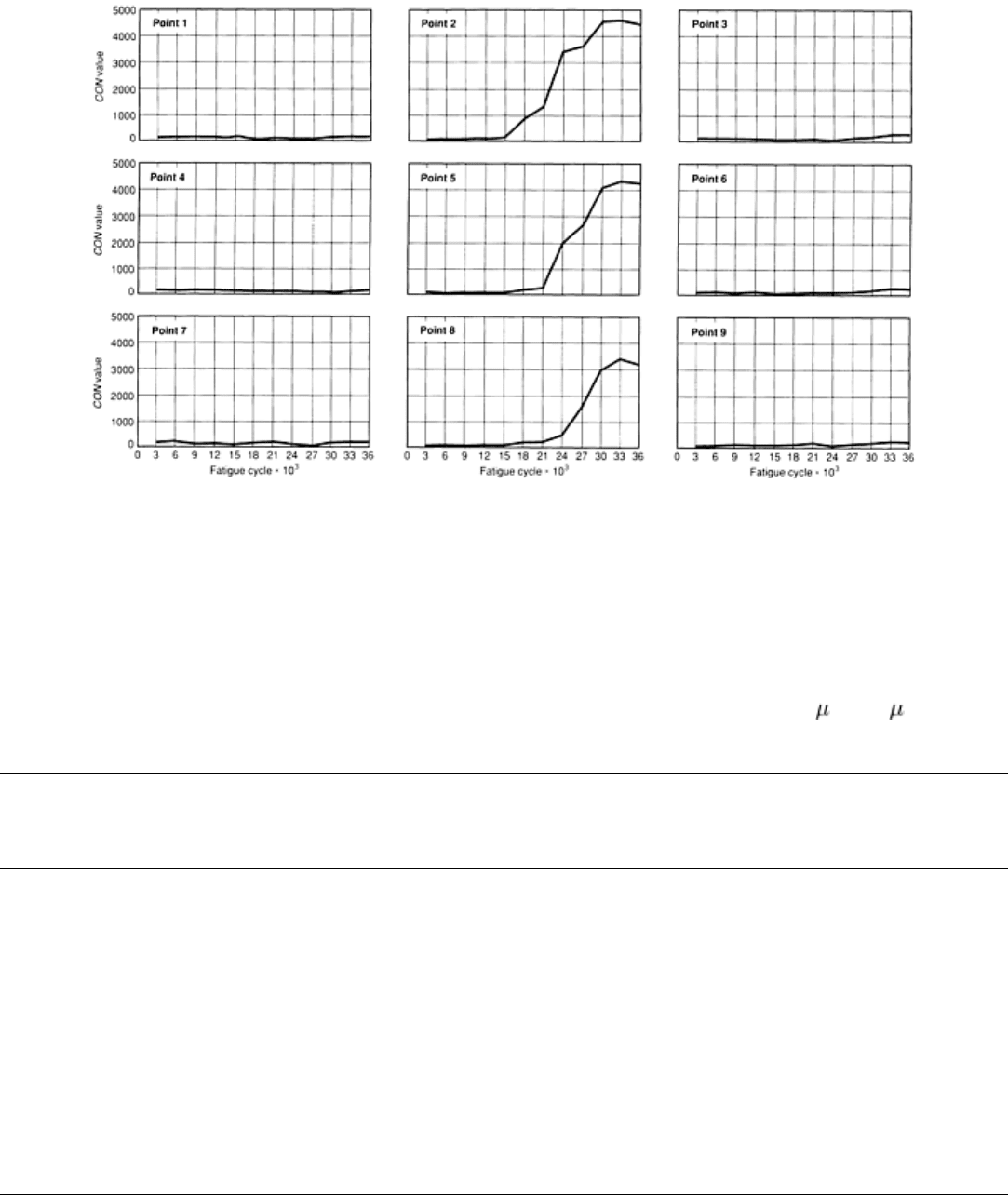
Fig. 13 Results of using CON value of a laser speckle patt
ern to monitor the onset of fatigue crack initiation and
the path of propagation for the sample described in Fig. 12
It is interesting to note that along points 2, 5, and 8, which pinpoint the location of the eventual crack propagation path,
the CON value increases dramatically at certain cycles of loading. On the other hand, the CON value stays almost
stationary at the six remaining points, which are only 1.5 mm (0.06 in.) away from the path of crack propagation. This
experiment was performed on an aluminum specimen with an initial surface roughness of 0.7 m (28 in.). Similar
results were obtained for specimens of other initial roughnesses.
Speckle Metrology
F.P. Chiang, Laboratory for Experimental Mechanics Research, State University of New York at Stony Brook
Future Outlook
The speckle method is a relatively new entry in the arsenal of metrological techniques, and it is still evolving. Current
research is emphasizing the use of automation in speckle metrology (Ref 8). Researchers are focusing their efforts on two
promising techniques. One is the automatic processing of the Young's or full-field fringes, and the other consists of
digitizing the speckles and processing them directly. The latter is very appealing because it would eliminate the use of
photographic film. However, with the current technology, the solid-state detector does not yet have resolution comparable
to that of a photographic emulsion. Other research efforts have been geared toward utilizing a combination of speckle
technique and holographic interferometry (Ref 8).
Reference cited in this section
8.
F.P. Chiang, Some Recent Advances in Speckle
Techniques for Photomechanics and Optical Metrology, in
Optical Testing and Metrology, Vol 661, Conference Proceedings, Society of Photo-
Optical Instrumentation
Engineers, 1986, p 249-261

Speckle Metrology
F.P. Chiang, Laboratory for Experimental Mechanics Research, State University of New York at Stony Brook
References
1.
J.M. Burch and J.M.J. Tokarski, Production of Multiple Beam Fringes From Photographic Scatterers,
Optica Acta, Vol 15 (No. 2), 1968
2. D.W. Li and F.P. Chiang, Laws of Laser Speckle Movement, Opt. Eng., Vol 25 (No. 5), May 1986, p 667-
670
3. F.P. Chiang, A Family of 2-D and 3-
D Experimental Stress Analysis Techniques Using Laser Speckles,
Solid Mech. Arch., Vol 3 (No. 1), 1978, p 1-32
4. F.P. Chiang, A New Three-Dimensional Strain An
alysis Technique by Scattered Light Speckle
Interferometry, in The Engineering Uses of Coherent Optics,
E.R. Robertson, Ed., Cambridge University
Press, 1976, p 249-262
5. F.P. Chiang, J. Adachi, and R. Anastasi, Thermal Strain Measurement by One-Beam Las
er Speckle Method,
Appl. Opt., Vol 19 (No. 16), 1980, p 2701-2704
6. A. Asundi and F.P. Chiang, Theory and Application of White Light Speckle Methods, Opt. Eng.,
Vol 21
(No. 4), 1982, p 570-580
7. F.P. Chiang, Speckle Method With Electron Microscopes, in Proceedings of the Annual Spring Meeting,
Society for Experimental Mechanics, 1982, p 24-28
8.
F.P. Chiang, Some Recent Advances in Speckle Techniques for Photomechanics and Optical Metrology, in
Optical Testing and Metrology, Vol 661, Conference Proceedings, Society of Photo-
Optical Instrumentation
Engineers, 1986, p 249-261
Acoustical Holography
Revised by B.P. Hildebrand, Failure Analysis Associates, Inc.
Introduction
ACOUSTICAL HOLOGRAPHY is the extension of holography into the ultrasonic domain. The principles of acoustical
holography are the same as those of optical holography (see the article "Optical Holography" in this Volume) because the
laws of interference and diffraction apply to all forms of radiation obeying the wave equation. Differences arise only
because the methods for recording and reconstructing the hologram must accommodate the form of radiation used. This
need to accommodate the form of radiation restricts the practical range of sound wave frequency that can be used in
acoustical holography, as discussed later in this article.
At present, only two types of basic systems for acoustical holography are available:
• The liquid-surface type
• The scanning type
These utilize two different detection methods, and these methods in turn dictate the application of the systems to
nondestructive inspection. Neither of these two types of systems relies on the interferometric techniques of optical
holographic inspection, in which information on flaws at or near the surface of a test object is obtained from the pattern
formed by interference between two nearly identical holographic images that are created while the object is differentially
stressed. Instead, systems for acoustical holography obtain information on internal flaws directly from the image of the

interior of the object. The principles of flaw detection by ultrasonic waves, as well as the equipment used, are discussed in
the article "Ultrasonic Inspection" in this Volume. Ultrasonic holography is discussed in detail in Ref 1.
Reference
1.
B.P. Hildebrand and B.B. Brenden, An Introduction to Acoustical Holography, Plenum Press, 1972
Acoustical Holography
Revised by B.P. Hildebrand, Failure Analysis Associates, Inc.
Liquid-Surface Acoustical Holography
The basic system for liquid-surface acoustical holography is similar to the basic system for optical holography except for
the method of readout.
Acoustical System. In liquid-surface systems (Fig. 1), two separate ultrasonic transducers supply the object beam and
reference beam, which are both usually pulsed. The two transducers and the test object are immersed in a water-filled
tank. The test object is positioned in the object plane of an acoustic (ultrasonic) lens, which is also immersed in the tank.
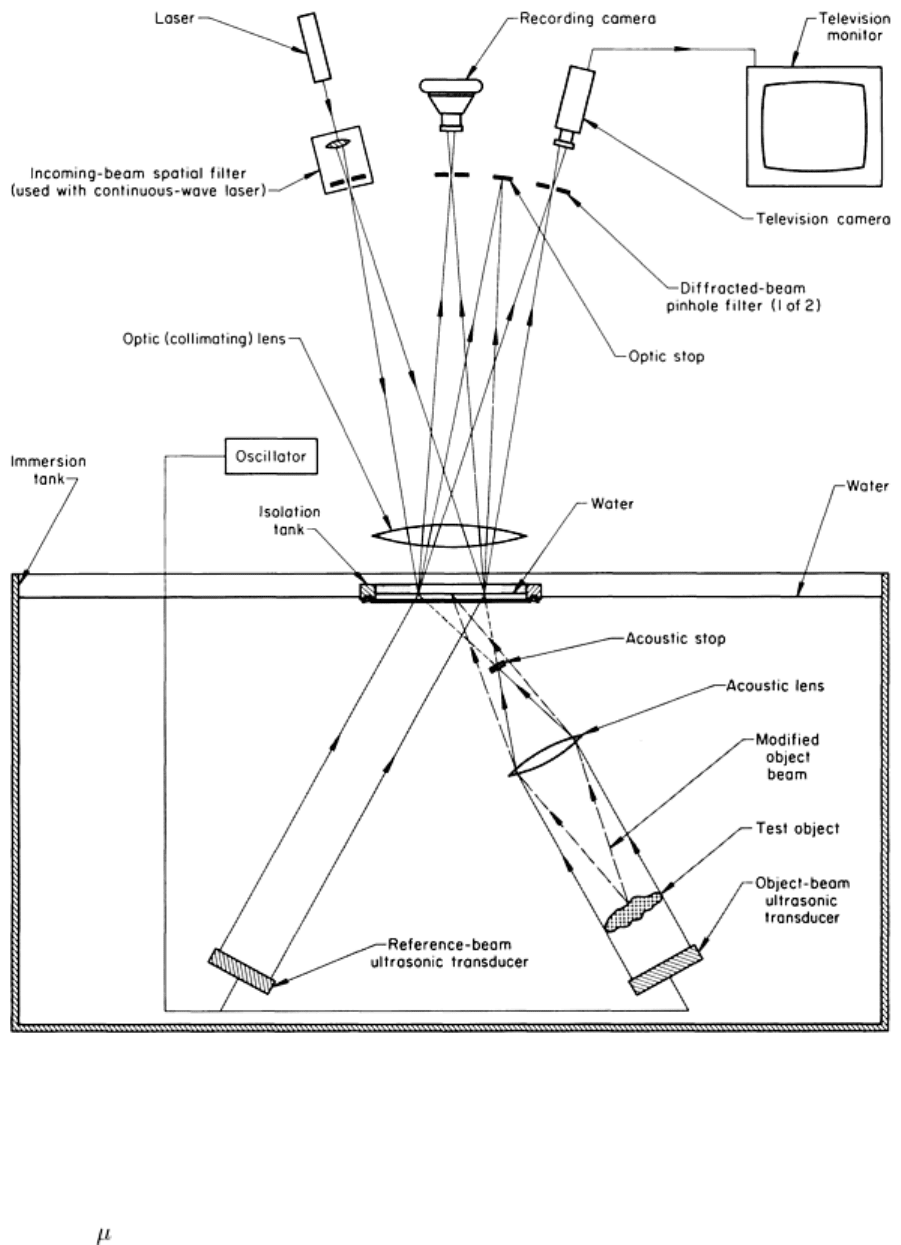
Fig. 1 Schematic of the basic acoustical and optical systems used in nondestructive inspection by liquid-
surface
acoustical holography. See text for description.
The practical limits for the object beam transducer in a commercial system are a wave frequency of 1 to 10 MHz, a pulse
length of 50 to 300 s, and a pulse-repetition rate of 60 to 100 per second. This transducer is placed so that its beam
passes through the test object. (Occasionally, the object beam transducer is glued to the bottom of the test object, but more
often there is a liquid path between them.) As the object beam passes through the test object, it is modified by the object.
The modification is generally in both amplitude and phase. The object beam then passes through an acoustic lens, which
focuses the image of the test object at the liquid surface. This image contains a wave front nearly identical to that
emanating from the test object. (A small disk of a material having very high acoustic impedance can be placed at the focal
point of the acoustic lens to prevent any unmodified portion of the object beam from reaching the surface of the liquid.)
The reference beam transducer is connected to the same oscillator as the object beam transducer so that it emits a second
wave front coherent with the wave front from the object beam transducer. The reference beam transducer is aimed at the
same region of the liquid surface as the object beam, where the wave fronts interfere. The pressure of the beams distorts
the liquid surface in this region, levitating portions of it to form a static ripple pattern that acts as a relief hologram.
Pulsed ultrasonic beams are used more often than continuous beams. With pulsed beams, the time of arrival of the
reference beam at the liquid surface can be varied to compensate for any variations in transit time of the object beam as it
traverses the test object and for any significant differences in the path lengths of the beams; this ensures that both beams
will arrive at the liquid surface at precisely the same instant to form the ripple pattern.
A water-filled isolation tank is situated inside the immersion tank and serves to prevent ambient vibrations from
interfering with the formation of the hologram. A second reason that pulsed ultrasonic beams are used more often than
continuous beams is to avoid the creation of standing waves in the immersion tank that would make isolation more
difficult.
Although liquid-surface acoustical holography is ideally suited to the use of the ultrasonic object beam in the transmission
mode, theoretically there is no reason that the beam cannot be used in the reflection mode to form the image. Practically,
however, the high level of object beam intensity and the high quality of object beam transducer required for reflection-
mode operation prevent the liquid-surface system from being effective in this mode.
Optical System. In contrast to optical holography, in which the holographic pattern is photographed and the resulting
hologram is used to diffract light, in acoustical holography the ripple pattern on the liquid surface is used directly as a
grating to diffract light. Therefore, this is a real-time system. The image is reconstructed from the hologram by reflecting
a beam of coherent light from the ripple pattern in the isolation tank (Fig. 1). The beam is generated by a laser and passes
through an optical system before illuminating the ripple pattern. When a pulsed laser is used, the timing of its pulse is
coordinated with the timing of the ultrasonic pulse so that the liquid surface in the isolation tank is illuminated only when
there is a stable ripple pattern present. The zero order of diffracted light carries no useful information, so it is blocked by
an optically opaque stop. The first two orders of diffracted light carry the image; after the beams are passed through
spatial filters, one might be used for photography and the other for television pickup or other purposes. Methods of
readout are discussed in greater detail in a later section of this article.
Object Size and Shape. The size of test object that can be completely imaged at any instant is limited by the size of
the object beam transducer and lens (typically to a maximum of 152 mm, or 6 in., in diameter). For large test objects, a
large object beam transducer and lens must be used, or the test object must be translated through the object beam.
Translation in one direction is used for narrow objects; wide objects require translation in two directions. A large, thick
object requires translation along the lens axis, as well as along the two other axes, in order to inspect the entire volume of
the object. This is because at any instant only a thin segment of the object is in the object plane of the lens and therefore is
imaged.
Despite the physical limitations imposed by liquid-surface acoustical holography, there are many inspection problems that
can be accommodated. The fact that the system is in real time allows large test objects to be moved through the object
plane fast enough to permit high inspection rates. Strip products are especially suitable for inspection by liquid-surface
acoustical holography because they are essentially two dimensional and can easily be translated through the object plane.
This type of arrangement is shown in Fig. 2. Small parts can be moved through the object plane in a similar manner by the
addition of a conveyor belt.
